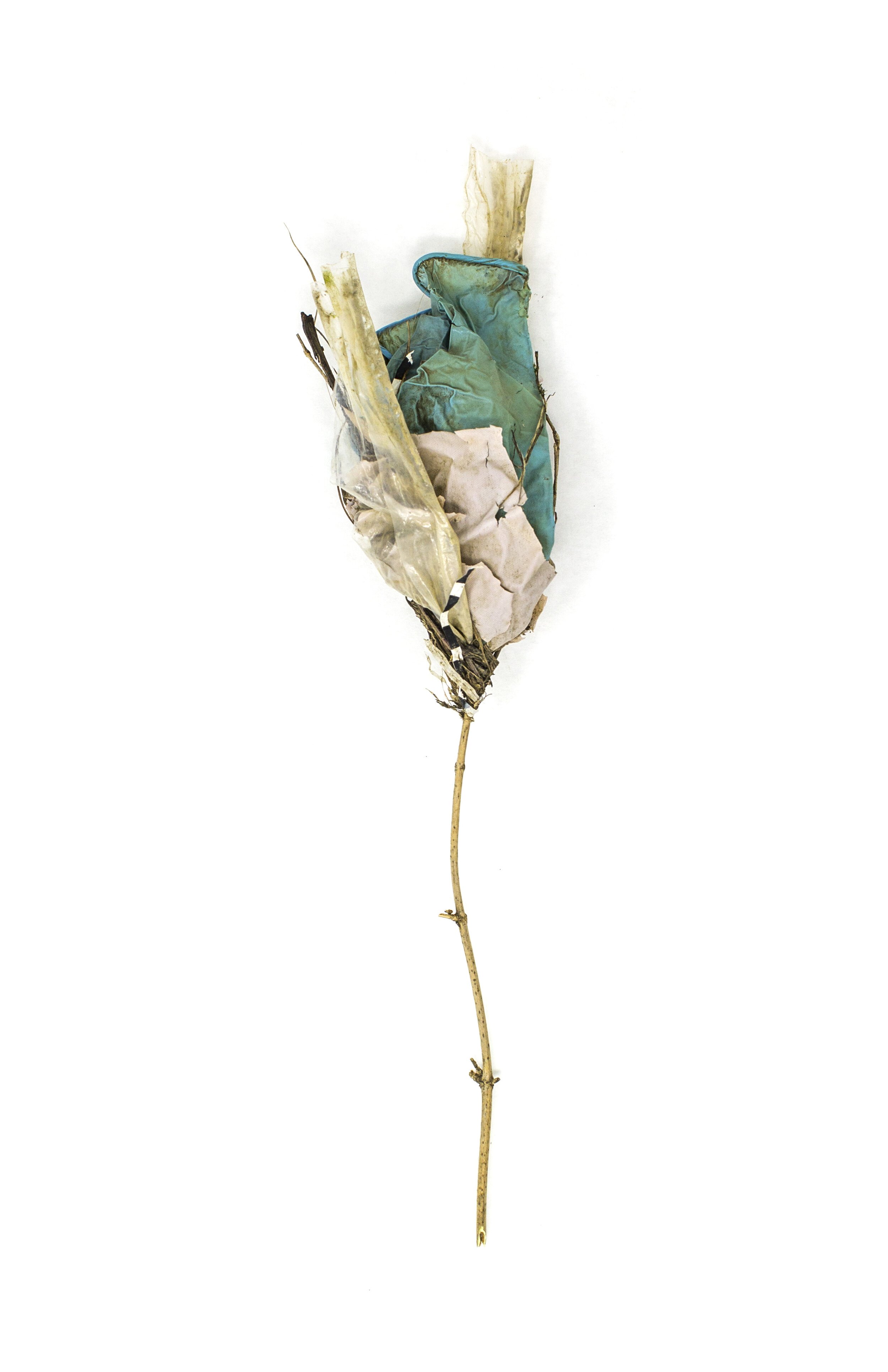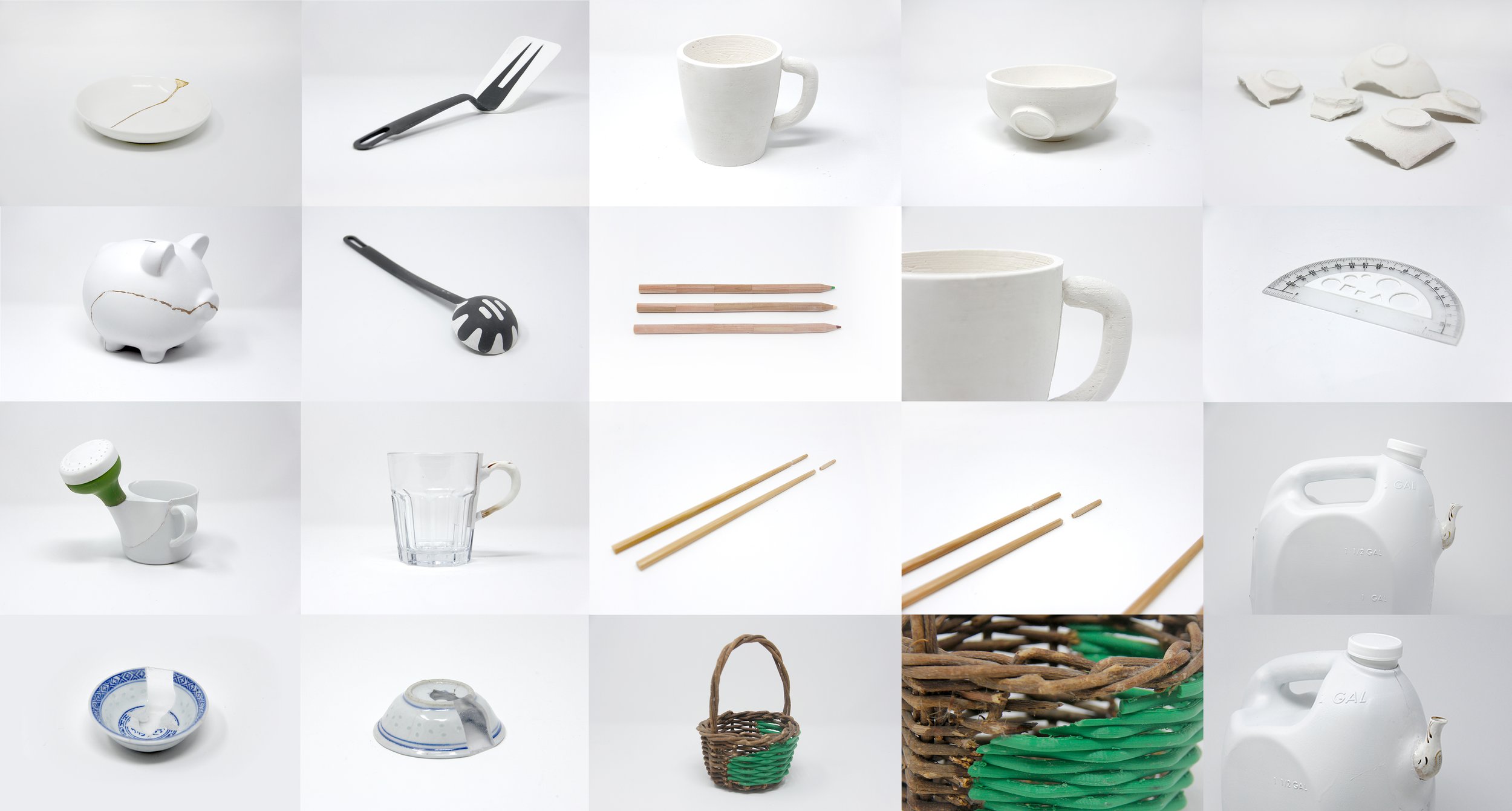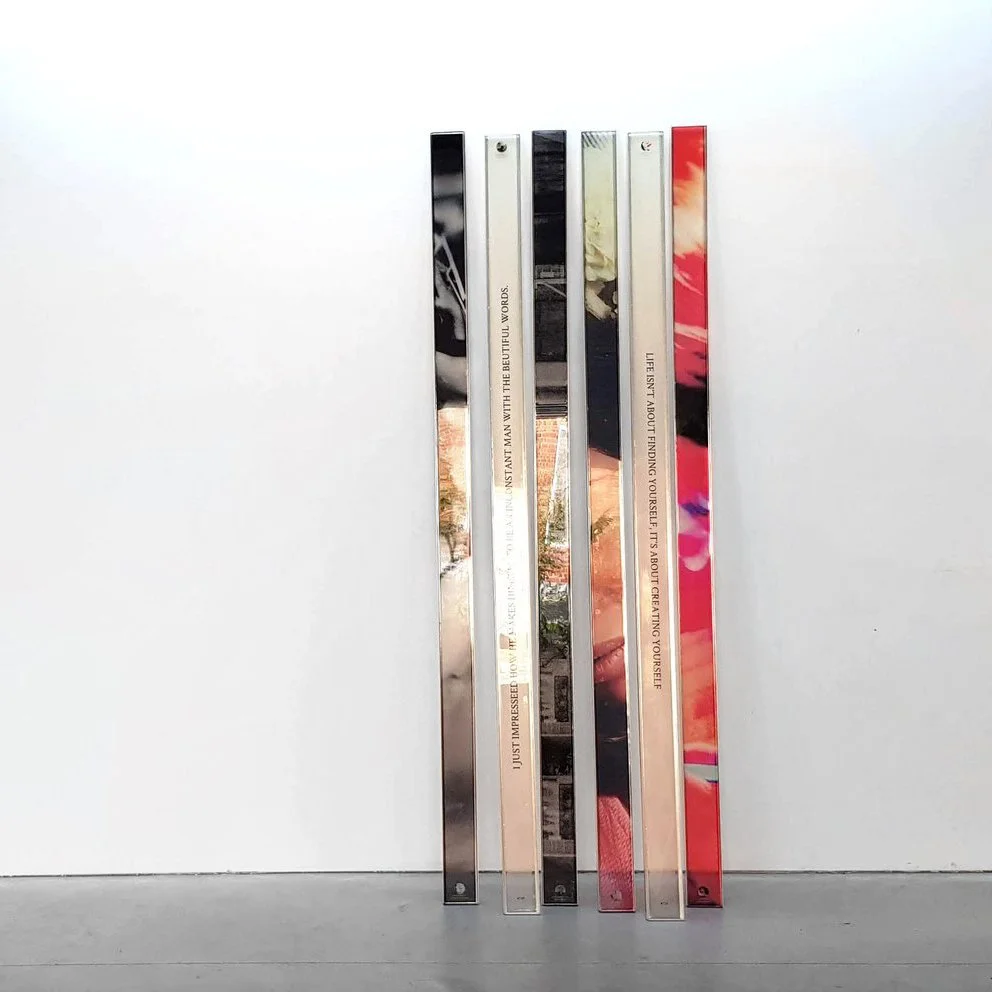10 Questions with Mallory Burrell
Mallory Burrell is a multi-media artist and educator based in Richmond, Virginia. Mallory’s work focuses on collecting and ritual. She is heavily influenced by the time she spends cleaning trash out of tributaries of the Chesapeake Bay watershed. Burrell has degrees in studio art and art history from Virginia Tech in Blacksburg, Virginia and obtained a master’s degree in fine art from James Madison University in Harrisonburg, Virginia. In 2020 Burrell received a Fulbright fellowship, the Western Sydney University Award in the Arts, Environment, and Public Health. In 2022, she will be heading to Sydney, Australia to work on a 10-month photography and videography project in the Badu mangrove forest.
Mallory has exhibited in over thirty exhibitions nationally and internationally. She recently had a solo exhibition at the Clifton Forge School of the Arts in Clifton Forge, Virginia (2021) and a two-person exhibition at the Duke Hall Gallery of Fine Art in Harrisonburg, Virginia (2020). This year Burrell’s work has featured in publications such as Cartographies of the Imagination, exploring the world of drawing between the real and the imagined at the OmVed Gardens in Highgate, London.
Mallory Burrell portrait
Flowers of the Anthropocene | DESCRIPTION
Land is freighted with memory, and Mallory’s work is the hybridization of memory amongst the decay of culture. In her practice, she sees beauty where it is without presence. The works she generates are in response to the landscapes she roams and the objects she collects. She documents and creates work out of debris she finds while exploring local streams, waterways, and floodplains connecting to the Chesapeake Bay watershed in Virginia. Through photographing her findings, she focuses on local environmental challenges and waste problems within our watersheds. In the Flowers of the Anthropocene series, she plays the role of an artist / pseudo-naturalist, for she does not create the flowers. She finds them in the waterways created by the forces of nature and clips the flowers to photograph them back in her studio. She focuses on the hybridization of organic and artificial matter and delights in creating new worlds, species, and organisms. Pseudo-scientific nomenclature is assigned to each flower, each bearing a name that references the plastic materials found within each specimen. Flowers of the Anthropocene series is an ongoing body of work with over fifty flower specimens. Upon closer inspection of the flowers, rich blends of organic leaf matter embed themselves around sticks, wrappers, plastic bags, straws, faux flowers, and endless plastic minutia to create visual poems of the anthropocentric landscape. She cultivates the places where the wilderness meets culture. The work offers a conversation between the spaces she traverses and the detritus that remains there.
Polypro cauta, Digital Photograph, 16x20 cm, 2018 © Mallory Burrell
INTERVIEW
When did you start experimenting with art, and when did you decide to become an artist?
I made my first quilt in middle school. I remember listening to Little Women on cassette tapes and had a set up with my mom’s old Singer sewing machine. I still use that machine when I machine stitch. My practice is much the same today. I will settle into a project, listen to an audiobook or podcast, and make.
There is a history of artists/artisans in my family. While I did not decide to become an artist until I was nearing adulthood, the drive to create was fundamental to me early on in life. My great-grandmother was more of a folk artist and painted on gourds, while her son, and then later on my father, was interested in painting, drawing, and printmaking. On my mother’s side, there is a history of working with fibers, needlework, and quilt-making. My mother remains an avid quilter.
What was the biggest lesson you learned while trying to become an artist?
The biggest lesson I have learned thus far is not to be a perfectionist and to let the materials guide me. At the beginning of my time at art school, I would agonize over every detail, ensuring it was exactly the piece I set out to make. I would ignore my intuition at times, and the piece would get overworked. Allowing room for process and change in the making is freeing and ultimately leads me to make more expressive pieces.
The second, most significant lesson I have learned is that anything, and I mean anything, can be a raw material for an artist. All material has a history and memory of its own. As an artist, I tap into the energy of that material and create a new relationship with it. That can be done either in the way it is presented to viewers, in actual manipulation of the material itself to make something else, a represented or manipulated image of the material, or any combination of theses.
And what about your inspiration? Do you have any artists that inspired you to pursue a career in art and still influence your work today?
When I first got to art school, my instructors started playing PBS Art 21 documentaries for us in class. The range of contemporary artists and the diverse mediums that were being used blew me away. The episode featuring Ann Hamilton especially stood out. The sheer scale of her work and the idea of installation art were exciting and left an impression on me as a young artist in school.
Some of my favorite visual artists are Hieronymus Bosch, Njideka Akunyili Crosby, Wangechi Mutu, Mierle Laderman Ukeles, Marcel Duchamp, Mark Dion, Salvador Dalí, Trenton Doyle Hancock, Mel Chin, Mary Mattingly, Firelei Báez, Heather Dewey-Hagborg, among others.
What’s the essential element in your art? And how did you evolve this way of working?
I am a collector of overlooked left-behind materials. It is a bit like recycling. Nothing is wasted in the natural process of decay and subsequent growth. And it is this mentality I tap into when I make work and where I find my practice thrives. There is potential in everything. I find some materials when I am out clearing trash from local landscapes, while other materials are gathered by gleaning thrifted goods.
I think it stems from my childhood exploring the woods behind my parent’s house. Our driveway was an old dump road, and therefore scattered throughout the property were treasures waiting to be unearthed. We found all types of things like an old car filled with tiles, missing shoes, and old bottles, and such. We made a club out of it, and each new discovery sent a jolt of excitement through all of us. That current of energy still exists when I make discoveries as an adult. It could be anything from a thrift-store book, trash, or a good pile of sticks that could be the medium or main inspiration for a work.
In your series Flowers of the Anthropocene, you use found objects and plastic debris to create artificial flowers. How did you come up with this idea?
The flowers are essentially readymades. Until recently, I lived in Harrisonburg, Virginia, and while there, I actively cleaned trash out of the local stream called Blacks Run. I discovered that there would be an increase in the amount of trash I would find after particularly bad storms, mainly due to the runoff from the roads.
When the water levels get high enough, the stream touches the tree limbs hanging over. In a rush of water, a mix of organic material and trash cling to the overhanging branches, and subsequently, these flower formations occur. My role in this series is to discover the specimen along the stream, photographically document them, and then assign them pseudo-scientific nomenclature. Many of these flower specimens have “poly” in the nomenclature denoting the plastic that is a common material I find within the flowers.
Polyflos eros, Digital Photograph, 16x20 cm, 2018 © Mallory Burrell
Polymos unisca, Digital Photograph, 16x20 cm, 2018 © Mallory Burrell
Your series seems to focus on themes close to environmentalism, but you also quote memory as a recurring theme in your work. What would you like the viewers to learn from your works?
My work does have close ties to environmentalism and memory alike. My experiences as a child and finding delight in the rubbish I found in the woods have crossed into my artmaking and the associations I have with found objects.
I believe humans hold a collective memory that we can tap into at different times. I think it is increasingly more challenging to tap into that collective current with the furthering separation of humans from the natural environment from which we are created. I tap into this energy when I am out in the landscape, exploring and collecting. I think there is ample room for the culture in which I am enveloped to rewire how we as a collective human body interact with the other living entities on Earth.
Viewers looking at this series will not be able to deny the evidence of the Anthropocene. National Geographic defines the Anthropocene as an unofficial unit of geological time, used to describe the most recent period in Earth’s history when the human activity started to significantly impact the planet’s climate and ecosystems. This series directly relates to these ideas of the altering terrain on Earth dominated by human influence.
How would you describe your creative process? Where do you start when creating new work?
I tend to work in series. If I make something that excites me, I am usually gearing up to make more. I start by finding materials and letting them guide where the project should go. Materials could be anything from a collection of images for future drawings, a group of trash from the stream, or a collection of really anything. I am a bit of an anti-minimalist in my making process. Minutia and material take over in abundance.
Lots of conceptual inspiration comes from the energy I put into my sketchbook practice. I primarily write in there. I record everything from the mundane to ideas I get from a book or discovered content I found compelling. It could even be as simple as a phrase I heard listening to the news, and it goes in the sketchbook. If I find myself writing about the same idea throughout different books or sections, I pay attention. Those thoughts are clearly things I still need to work through.
What do you think about the art community and market? And how did your perception change over the last year due to the pandemic?
In my experience, the art community and market are two entities that are crucial to the practice. Essentially, they offer artists a support system. The pandemic unended much of the world, and the art community felt those impacts. I felt the effect of canceled professional opportunities and exhibitions. The inability to go see work in museums and galleries, in the beginning, was also painful because I find the time I spend in those spaces to be critical. Openings are events in which new connections are established, and that aspect of the art world was completely upended with virtual exhibitions.
I think the art community and market have worked diligently to find ways to continue getting new work out into the world. Both physically and digitally, galleries are doing double time to make sure artwork remains accessible to those interested in experiencing it. The pandemic has also created new avenues for artist communities without brick-and-mortar galleries to display work on a digital platform to curate and share online. While I find seeing art in person is more fulfilling, I fully support the digital platforms that curate shows for people to inject via a screen. Since the pandemic, I have displayed work explicitly curated for online consumption.
Polyflous pholentina, Digital Photograph, 16x20 cm, 2018 © Mallory Burrell
Polypoa ripal, Digital Photograph, 16x20 cm, 2018 © Mallory Burrell
What are your thoughts on digital presentations, like fairs and exhibitions, for artists? Do you think these are good opportunities for young artists like yourself?
I believe that digital platforms are wonderful for their flexibility for the artist and the ability to share work with a greater audience. Digital presentations also relieve any financial burden of shipping and installing the work, which is also fantastic for young artists who do not have full funding for such expenses. However, I think that to go digital entirely would be a terrible tragedy for the artist, curator, and viewer. Exhibitions are unfolding stories, and each work in it is a tactile vessel. In relationship with one another in a physical space, the pieces become something to contemplate and observe that could never be fully achieved in a digital interface.
Finally, what are your plans for the future? Any exciting projects, exhibitions, or collaborations you are particularly looking forward to?
I am looking forward to traveling to Australia, hopefully sometime in 2022. I received a Fulbright fellowship, the Western Sydney University Award in the Arts, Environment, and Public Health back in 2020 and have been awaiting the green light to depart. I will be working with Dr. Rachel Bentley on a photography and videography project in the Badu mangrove forest in Sydney, Australia. The project will manifest in a website for others to explore the layers of forest life in this blue carbon ecosystem.





















